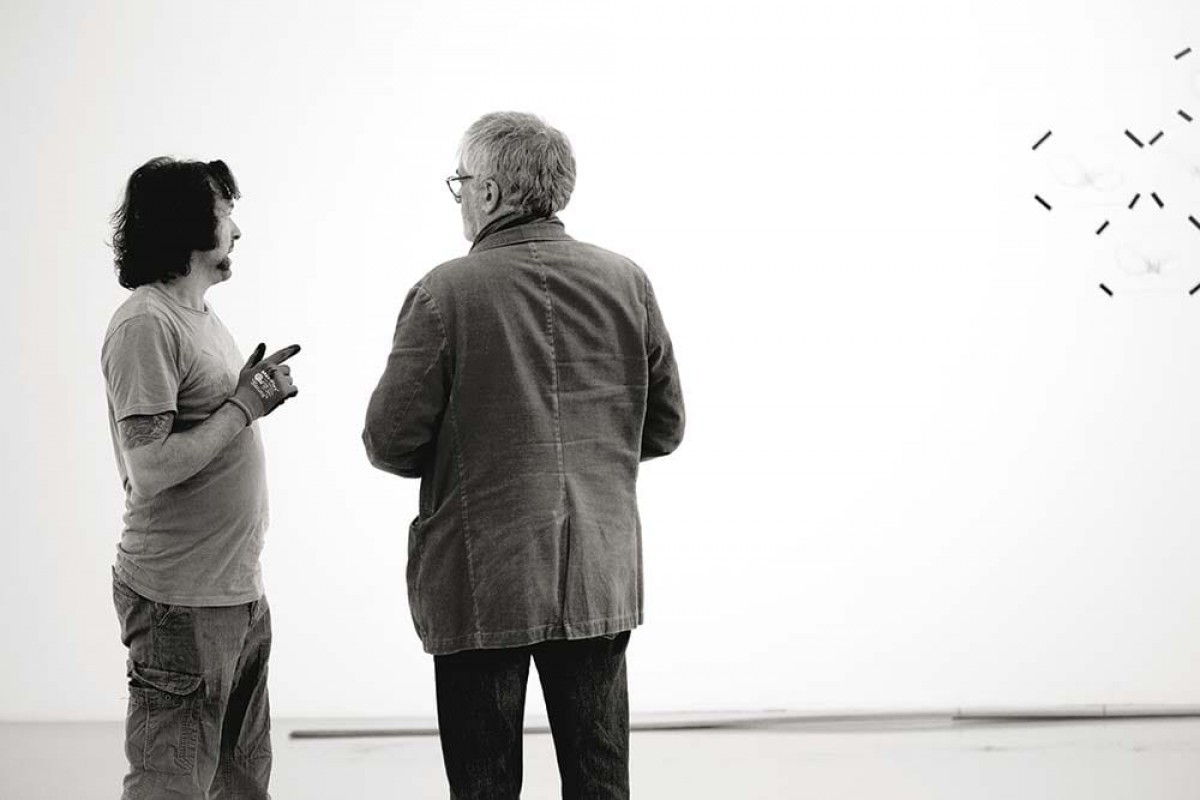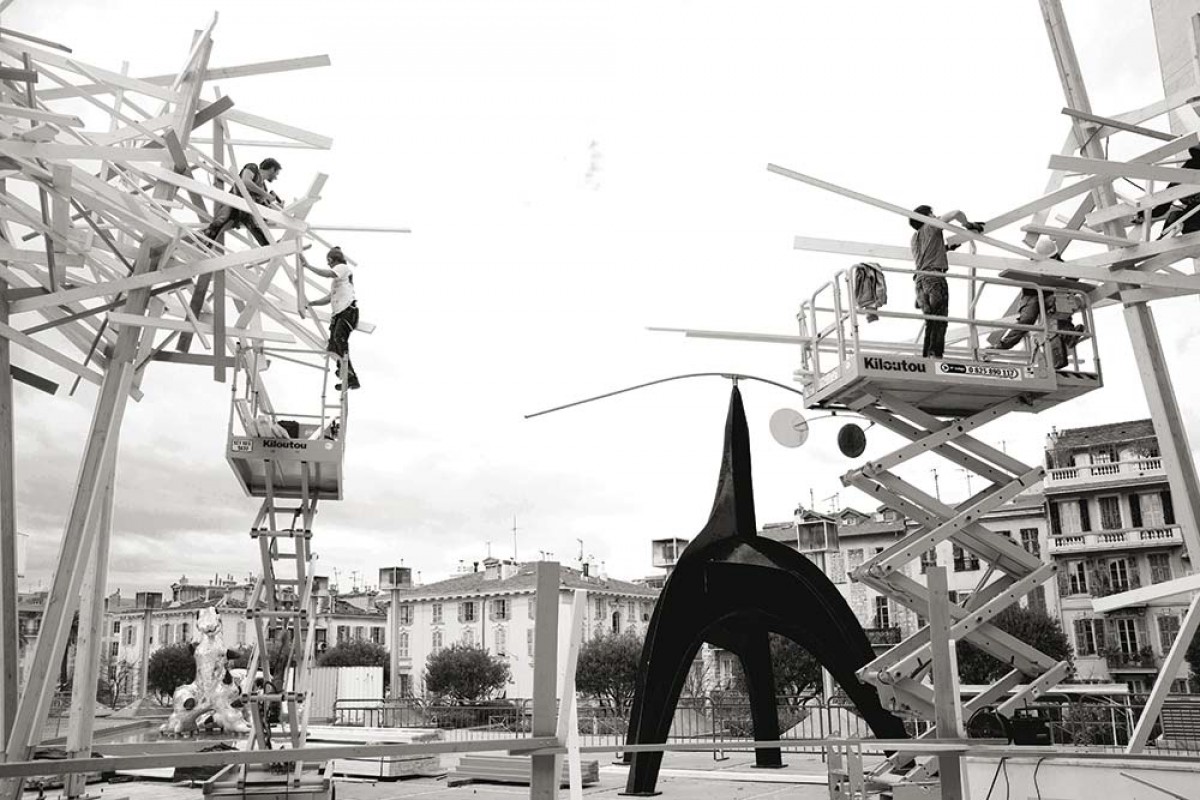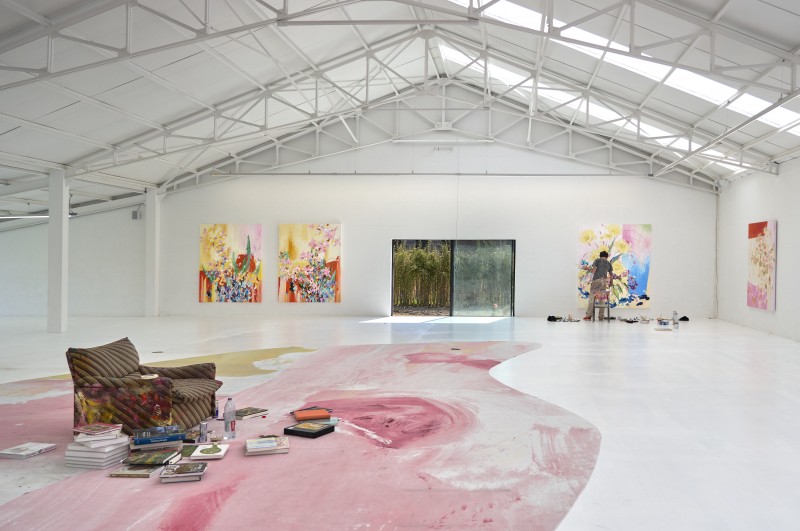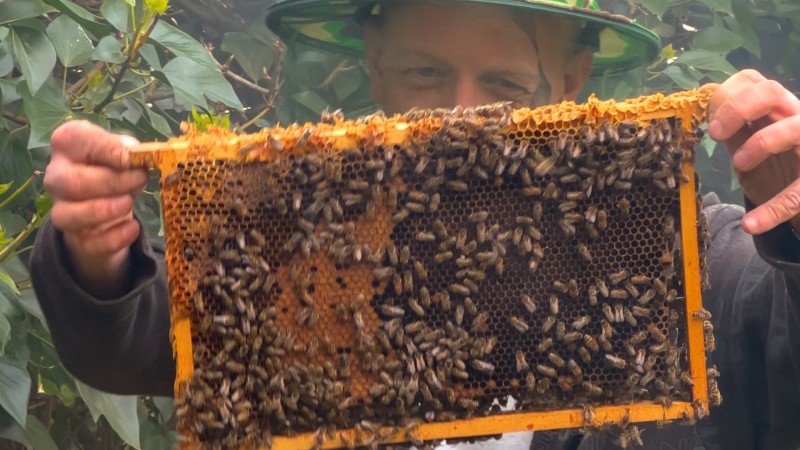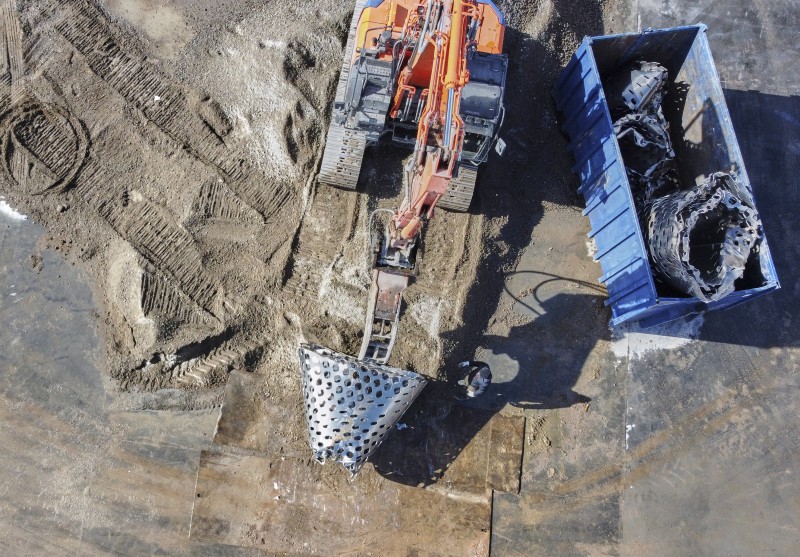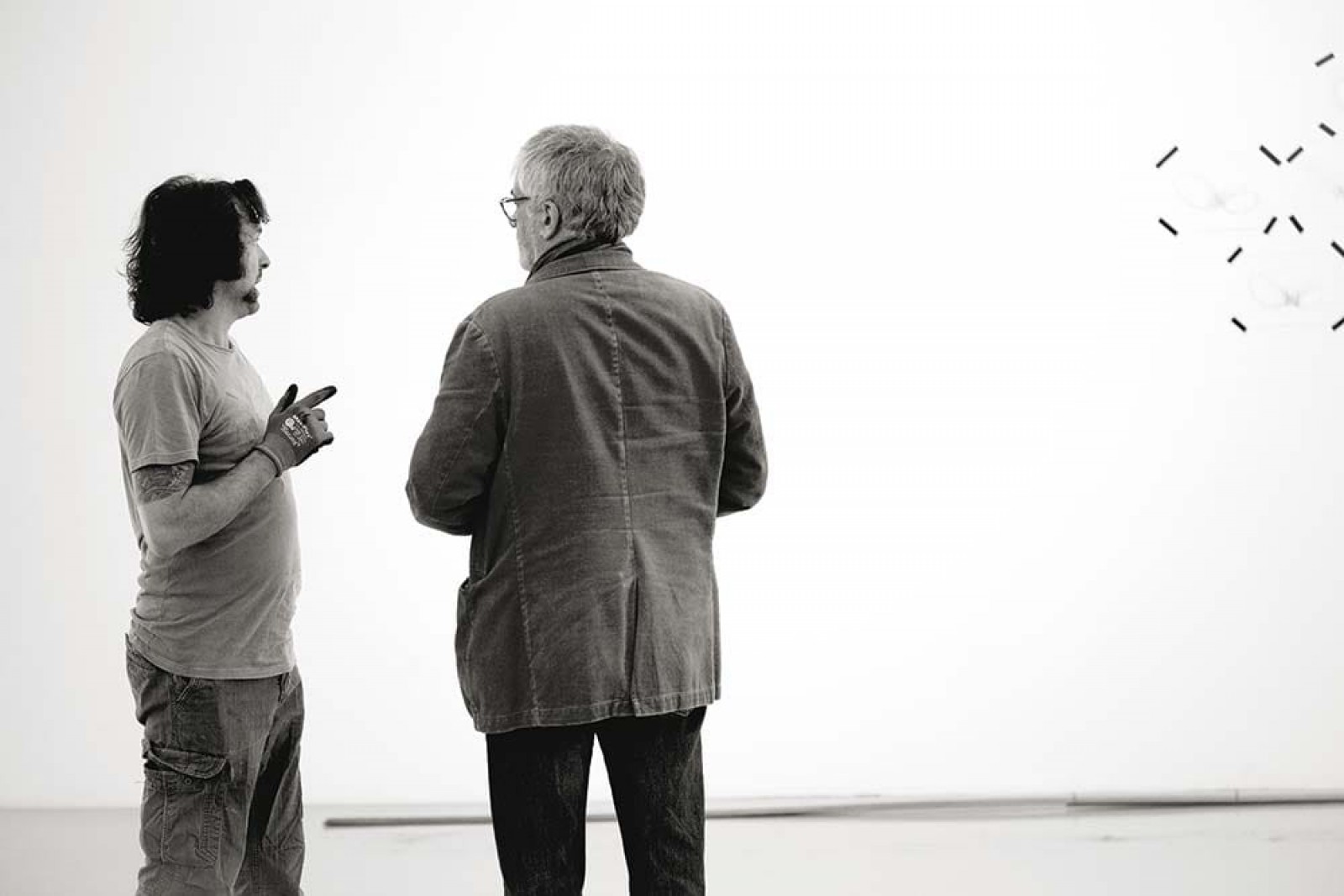
By Gilbert Perlein, Director of the Museum for Modern and Contemporary Art — MAMAC, Nice, Paris
Mamac Museum interviewing Arne Quinze
" The reason that in a sense I took my lead from Arne Quinze was because I knew that his expertise lay in handling a dialogue with the city, the town and its architecture "
This interview was taken at the MAMAC on the 18th of april, 2013 The Museum of Modern Art & Contemporary Art, MAMAC, was inaugurated in 1990. Our organisation has an international dimension. We have worked a great deal on a movement which is very well-represented here in this region, and I shall return to this, namely, on New Realism. The New Realism artists worked from the outset with American artists working in assemblage art, such as Rauschenberg – key players in the New Realism movement have worked here in Nice. We should of course mention Yves Klein, Arman, Martial Raysse, César… So in a sense you could say that Nice was the cradle for the work of a very significant number of proponents of this New Realism. They have lived and worked here, and that obviously provides us with an extraordinary opportunity. In short, this region is particularly rich in this type of artist. Throughout the entire 20th century, there were great figures like Picasso, Matisse, Chagall, Renoir and Hartung who came to settle in the region. They all said that they had come for the quality of light, the climate, and the right conditions in which to do their kind of work. Then, after these major artists, there was an entire young generation who continued to work and live in this region, which means that the Côte d'Azur today is the leading region in France for artworks including in the field of contemporary art. Conditions are genuinely favourable to the production of high-quality artistic work in this region. There is one thing about this museum which gives it an enormous advantage: it is in the town centre. The fact that it is in the heart of the city means that people spontaneously happen upon this museum when they move around town. Now, the important thing is that with the forecourt and Yves Klein Square and with activities organised from time to time, people feel attracted to coming into the museum. That means that every time that we have "urban" art associated with the museum, and in its periphery, there is a link with the town, a natural link which means that the public in the vicinity say to themselves: "Hang on, what essentially is inside this building?" In our conversations with Arne Quinze, and I will return to that, the question that immediately arose was: "How best to occupy this space?" And the reason that in a sense I took my lead from him was because I knew that his expertise lay in handling a dialogue with the city, the town and its architecture. That is really his core profession – it is what he really knows how to do best. There is – and we were talking about a Franco-American programme – a major, a key artwork on this forecourt, which has been here for 22 years. It is a large stabile-mobile by Alexander Calder, a cornerstone of the collection and also a lookout, an invitation to come in. It welcomes the public and so I suggested to Arne that he worked on a homage to that particular piece which is still on the forecourt. So he adapted his structure to make it embrace, surround and intertwine with Calder's sculpture. There is another important reason for this. Calder makes stabiles (that is what they are called). The nomenclature for his works is very precise, these are his best-known works, and he also makes, as is the case here, stabile-mobiles, in other words a mobile held by a stable structure which hangs or supports it. If we look closely at the types of urban structure that Arne Quinze creates, they are also stabiles. They have large supporting structures which allow for horizontal deployment. So there is, at one and the same time, a reference to Calder, and there is also in the very structure of Arne's work a formal similarity to that of Alexander Calder. So we found that these two works provided just that richness of dialogue in relation to architecture that I was talking about earlier in relation to the town. We then needed to offer him a circuit through the museum which could precisely link up the artwork created inside with this gigantic artwork that the public discover outside. We wanted the route through the museum, outside/inside, to offer new viewpoints at different places and multiple perceptions of this work. I think that this is what the route through the museum manages to provide, with the artwork on the forecourt, the work inside Yves Klein Square and on the third floor on the Belvédère side, a room which has been produced especially for the museum. In this room there is also the idea of customisation, of adapting to space, on the basis of issues that he has already explored elsewhere. Perhaps the main difference here is that outside there is this work with new components, a very attractive piece made of recycled materials, at the end of the exhibition. So the issue for him here, which is in some ways an ecological one, is different to his work inside the museum. This is a work on reclaimed wood, that he has picked up haphazardly in different places in his travels around the world, on his invitations here and there, to places as far apart as Rio de Janeiro and China and even Shanghai. So we have recurring elements that he reuses and here we could talk about techno green art, because this is a technical art, but one that deals with this kind of issue in the sense that he uses poor materials that are about to be thrown out and allows them to be reborn and have a new life. That is in itself quite dramatic. I think that it will get through to people because clearly there is a sense of immediacy about the relationship that it creates and there is another quality behind it. I should just mention here that Christo was the museum's first guest and its first exhibition was of Christo's work. There are similarities in Arne's approach too, particularly in the way it is located in nature or in the urban environment and also in the way he turns it into a "work in progress", that is when he starts work, there is inevitably an immediate dialogue with the public who witness the artwork gradually come into being. That is the moment I particularly like, in Arne Quinze's kind of teamwork. He works with a team that has been with him for a long time, who are very well organised, and come equipped with engineering solutions, plans, and answers to all the safety issues. They spend ten days constructing the work in public view, and we get an idea very early on of their reaction. In this instance it is very positive – you can see that people are enthralled by this adventure. This work will have a fairly long life cycle, all summer, which is perhaps the busiest time of the tourist season here in a place which aims to be at one and the same time a large space open to the public and also a space which, to a certain extent, offers shelter to the public. I have no doubts about how this public will react and respond to the work. I think that it has a very distinct impact and people will not find themselves faced with a work that is utterly impenetrable. On the contrary, there are elements that they can grasp immediately. That, I think, is the great quality of this work. In other words there is genuinely a clear, immediate connection with the public.
Mr. Gilbert Perlein is the director of the Museum for Modern and Contemporary Art (MAMAC), Nice, France.
Arne Quinze's brand-new atelier
The bees in Arne Quinze's wildflower garden
The beehives in Arne Quinze's wildflower garden got inspected and prepared for the upcoming...
Creation process
How I create my Lupine
Arne Quinze sees the arm of the crane as an extension of his own arm when sculpting. It's the...
